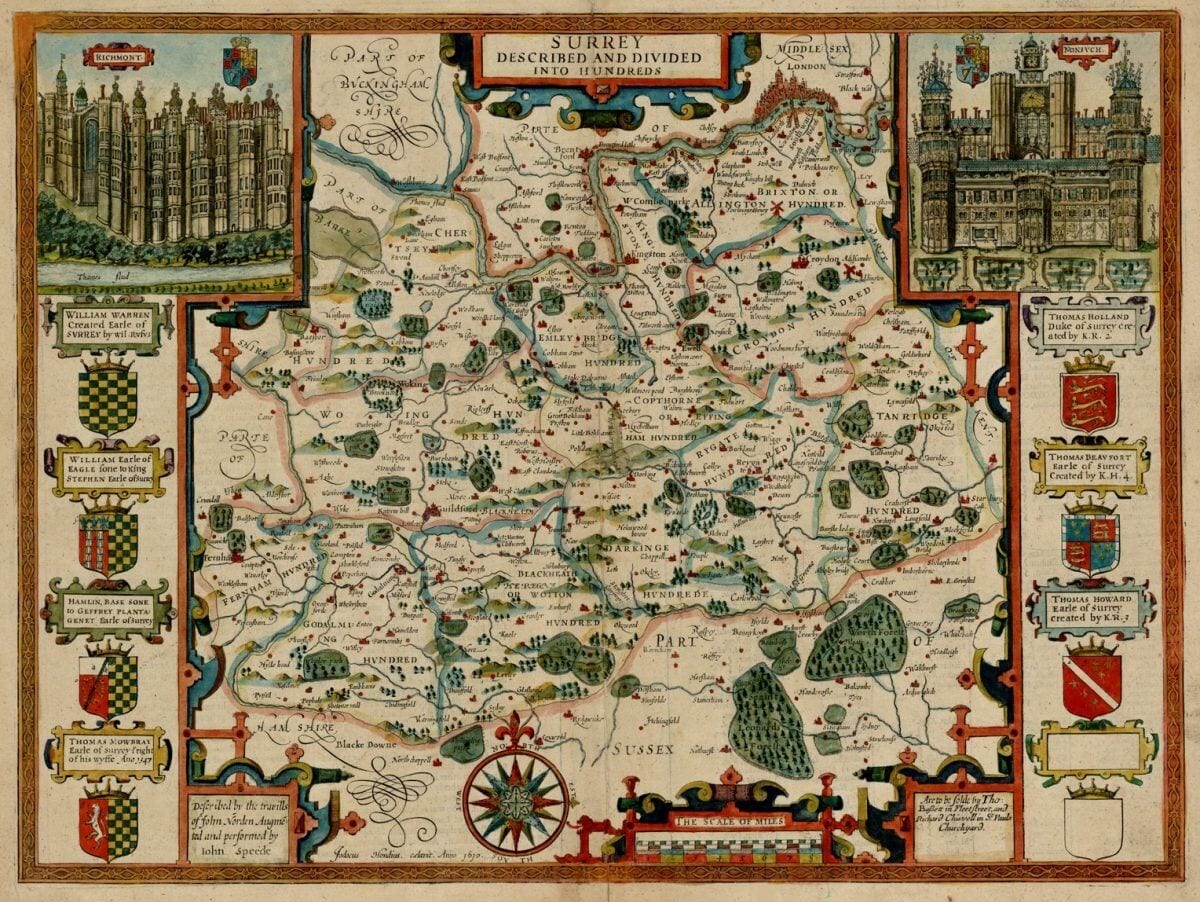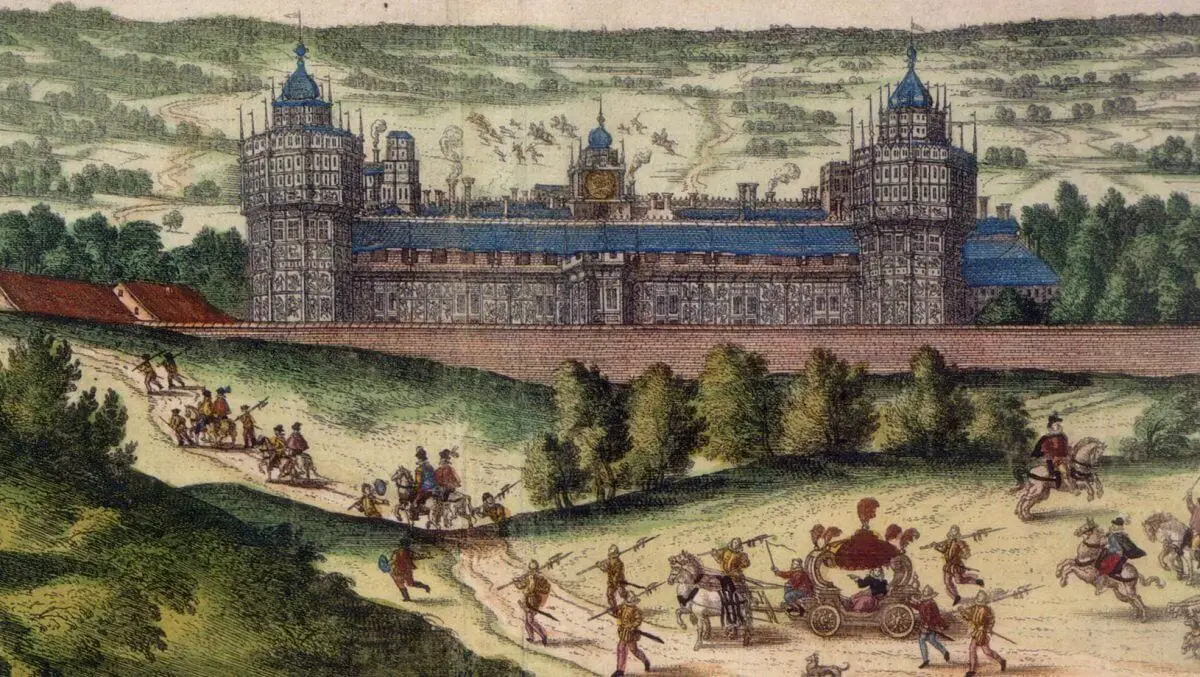Nonsuch Palace was one of Henry VIII’s largest building projects during his reign, built as a celebration of Henry’s power and grandeur, it was meant to rival that of the French King Francis I’s Château de Chambord.
The site of Nonsuch was previously occupied by Cuddington Manor, but with the birth of Henry’s son Edward VI, Henry wanted to celebrate securing his family’s succession and the advent of thirteen years as King. To this end, Henry evicted the Cuddington family and removed the village of Cuddington to make way for his grandiose vision of a palace to have no equal and call it “None Such”.
Nonsuch was originally conceived as a lavish royal hunting lodge, but the plan evolved into building a completely new royal palace, unlike most of Henry’s palaces which were adaptations of existing buildings. It was designed by Christopher Dickenson and William Clement, the architects, and builders of Hampton Court.
Construction began on the 22nd April in 1538, taking a skilled workforce of around 500 men nine years to complete the project at a cost of £24,000, in today’s money that would be around £10.5 million. Financing the project came from the money claimed from the dissolution of the monasteries and the building materials for the walls and foundations was stone sacked from nearby Merton Priory.

The palace layout consisted of two storey galleys that surrounded open-air courtyards. The outer courtyard had a large gatehouse, similar in design to that of a medieval castle. The galleys were mainly guest lodgings, with two great cellars to the south.
The inner courtyard was accessible by a second inner gatehouse and contained the royal chambers, privy chambers, chapels, two presence chambers, and the King’s privy gallery, with access to the kitchen court for preparing the massive feasts Henry was famous for hosting.
The south court also had two large eight-sided octagonal towers at each end where the premiere of Thomas Tallis’ masterwork, Spem in alium, was rumoured to have been performed.
What distinguished Nonsuch from traditional architecture, was the stucco panels in-between the timber framing on the exterior by the Italian Artificer Nicholas Bellin of Modena. Bellins was already famous across Europe for his work on the Fontainebleau for Francis I of France but claimed asylum in England after allegations of defrauding Francis.
Henry VIII was so impressed with his talent and knowledge of the latest Renaissance style that the king refused to return him for trial. Besides designing the slate ornamentation of Nonsuch he also later worked on Henry’s tomb at Westminster.
Henry VIII appears to have only visited Nonsuch three times, twice in 1545 and once in the year of his death in 1547 making the palace a somewhat expensive white elephant. In 1556, Queen Mary I sold the palace to Henry FitzAlan, 19th Earl of Arundel, who completed the interior furnishings and added ornate gardens and an orchard.

In 1585, Nonsuch would play host to the Treaty of Nonsuch, signed by Henry’s daughter Queen Elizabeth I of England and the Dutch rebels fighting against Spanish rule. It was the first international treaty signed by what would become the Dutch Republic, but Philip II of Spain viewed the treaty as a declaration of war marking the start of the Anglo-Spanish hostilities. Three years later, Phillip II launched the Spanish Armada and attempted to invade and conquer England unsuccessfully.
Following Parliament’s victory over the crown’s forces in the English Civil war of 1642–1651, the palace was confiscated and given to General Thomas Pride. Nonsuch would be returned to the crown after the restoration of the Stuart line in 1660 when King Charles II returned from exile.
Charles gifted the palace to his mistress, Barbara, Countess of Castlemaine and titled her the Baroness Nonsuch, but she tore down the palace around 1682 and sold off the furnishings and building materials to pay off her gambling debts.
Some elements of the palace were incorporated into other buildings, such as wood panelling can still be found in the Great Hall at Loseley Park near Guildford, but no physical traces above ground of the palace remains in the now named Nonsuch Park today.
Header Image – Nonsuch Palace by Joris Hoefnagel – Public Domain





